The document outlines data center network (DCN) architectures, including fat-tree and recursive designs, with a focus on design goals such as availability, scalability, and cost-effectiveness. It discusses various usage scenarios, including compute-intensive and data-intensive applications, and highlights challenges like reduced utilization and scalability issues. Additionally, it introduces the concept of modular data centers and virtualized DCNs, emphasizing their benefits in deployment efficiency and performance management.

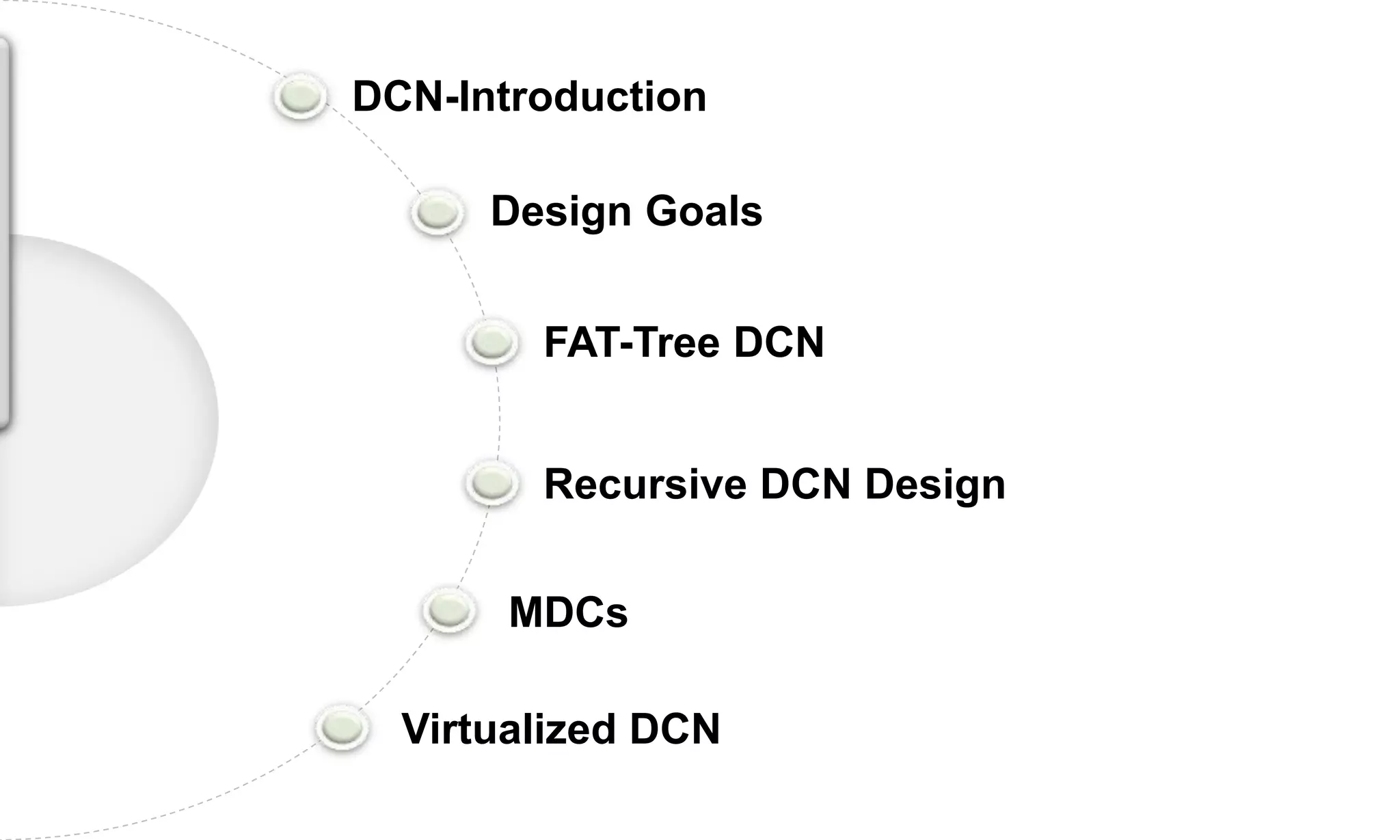
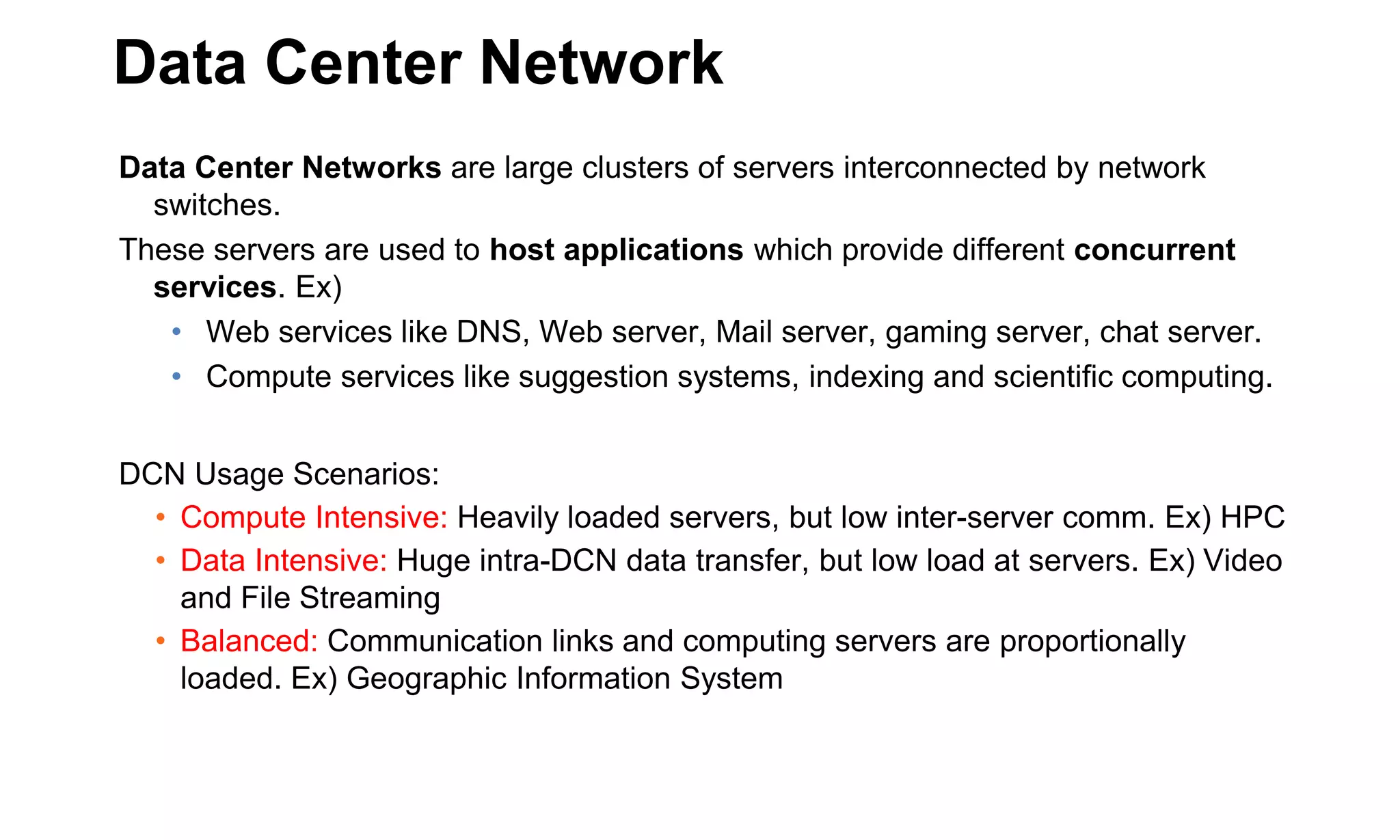
![Conventional DCN Architecture
Rack 3 Rack 10Rack 1 Rack 2
Server 21
Server 100
Server 91
Server 30
Server 1
Server 20
Server 11
Server 10
ToR ToRToR ToR
AggrAggr Aggr
Core Core
Core
[10 GigE switches]
Aggregation
[10 GigE switches]
Edge
[Commodity
switches]
Internet
ETHERNET](https://image.slidesharecdn.com/dcnintroduction-141010054657-conversion-gate01/75/Introduction-to-Data-Center-Network-Architecture-4-2048.jpg)
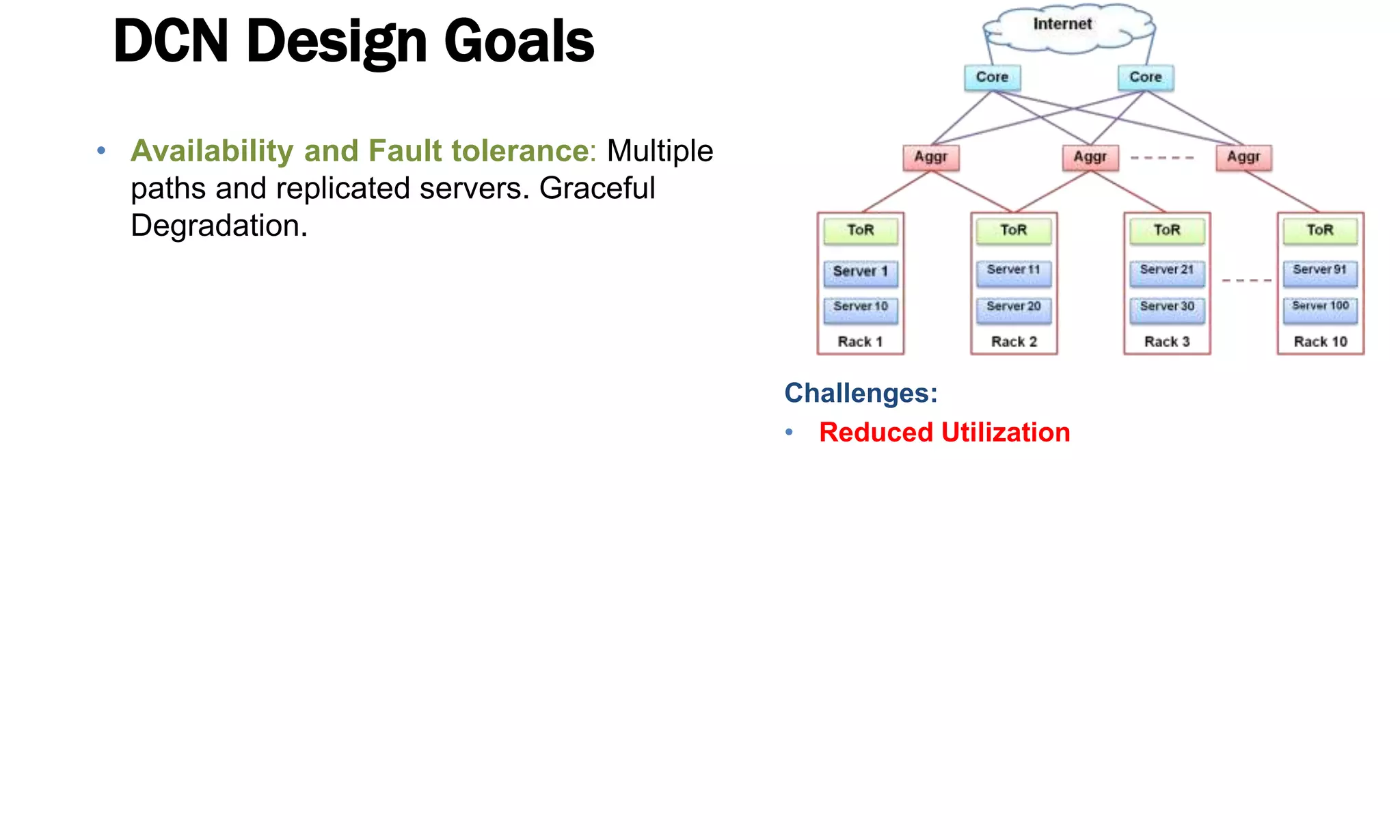
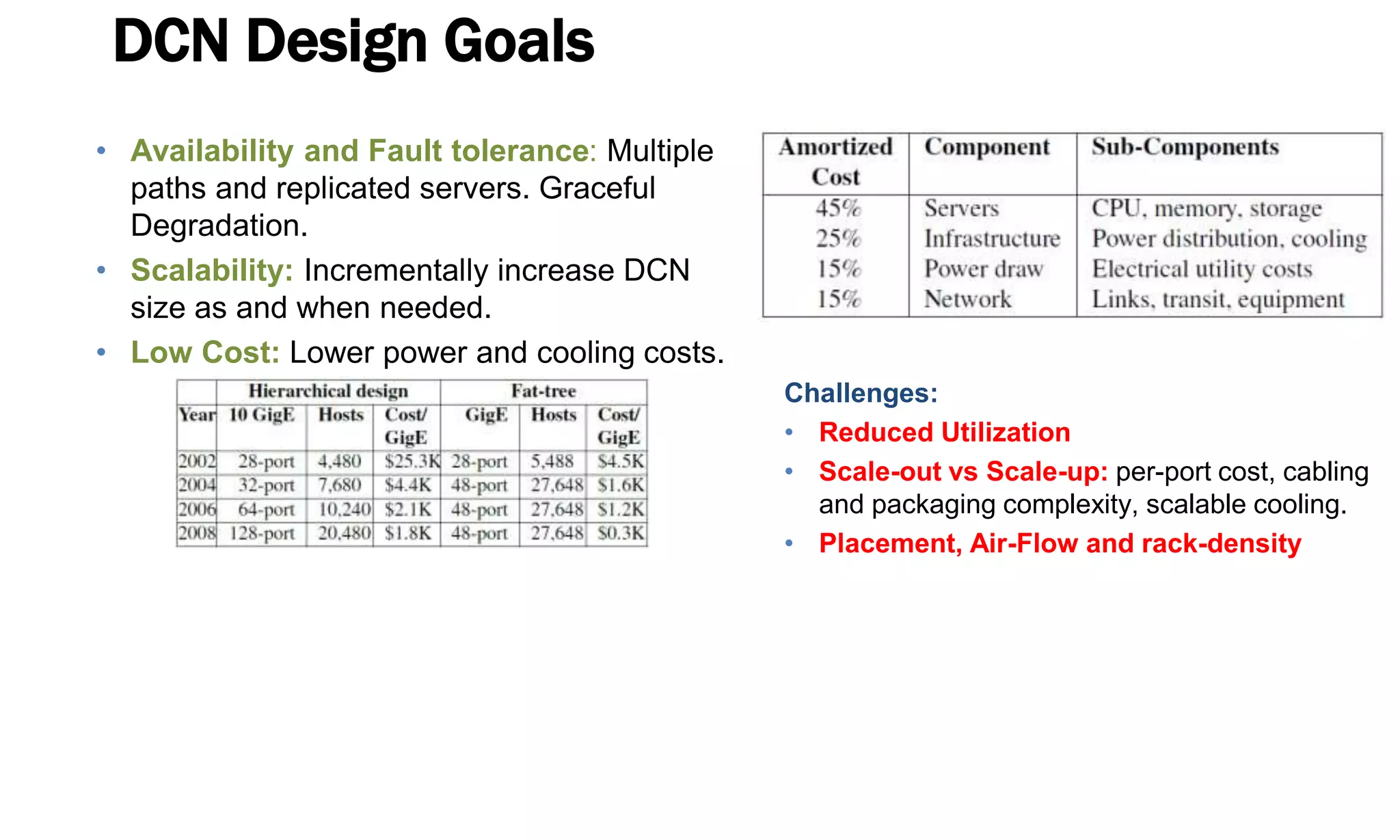

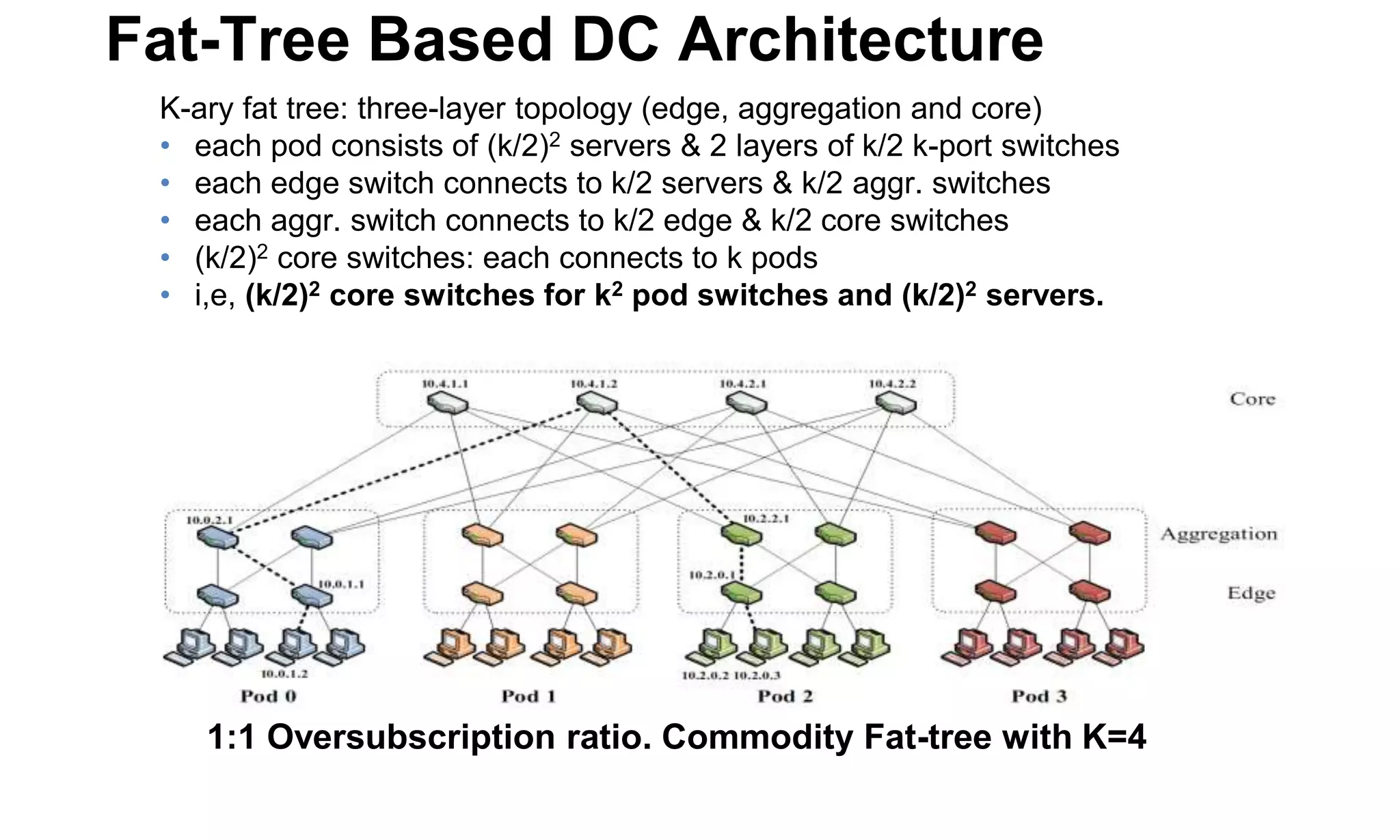
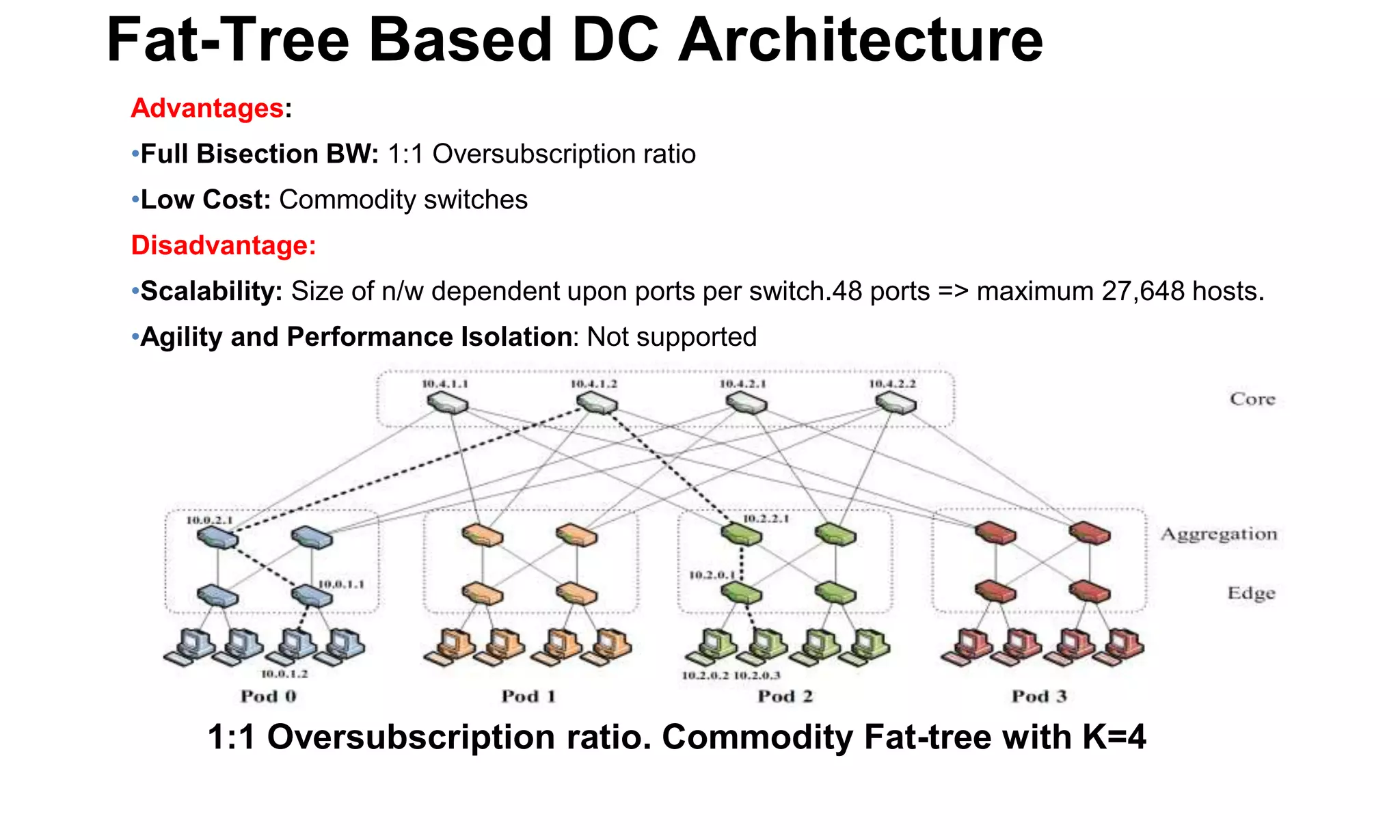
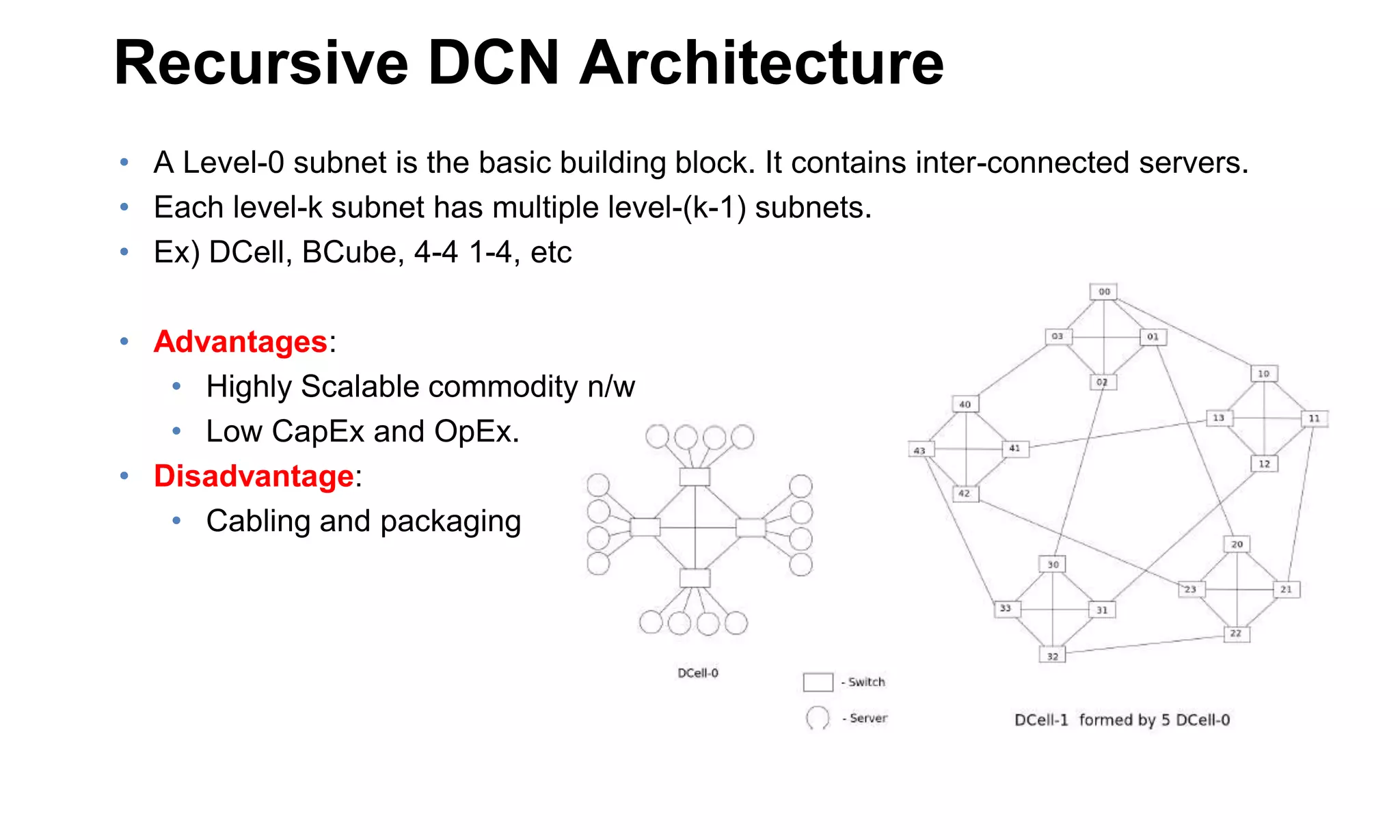
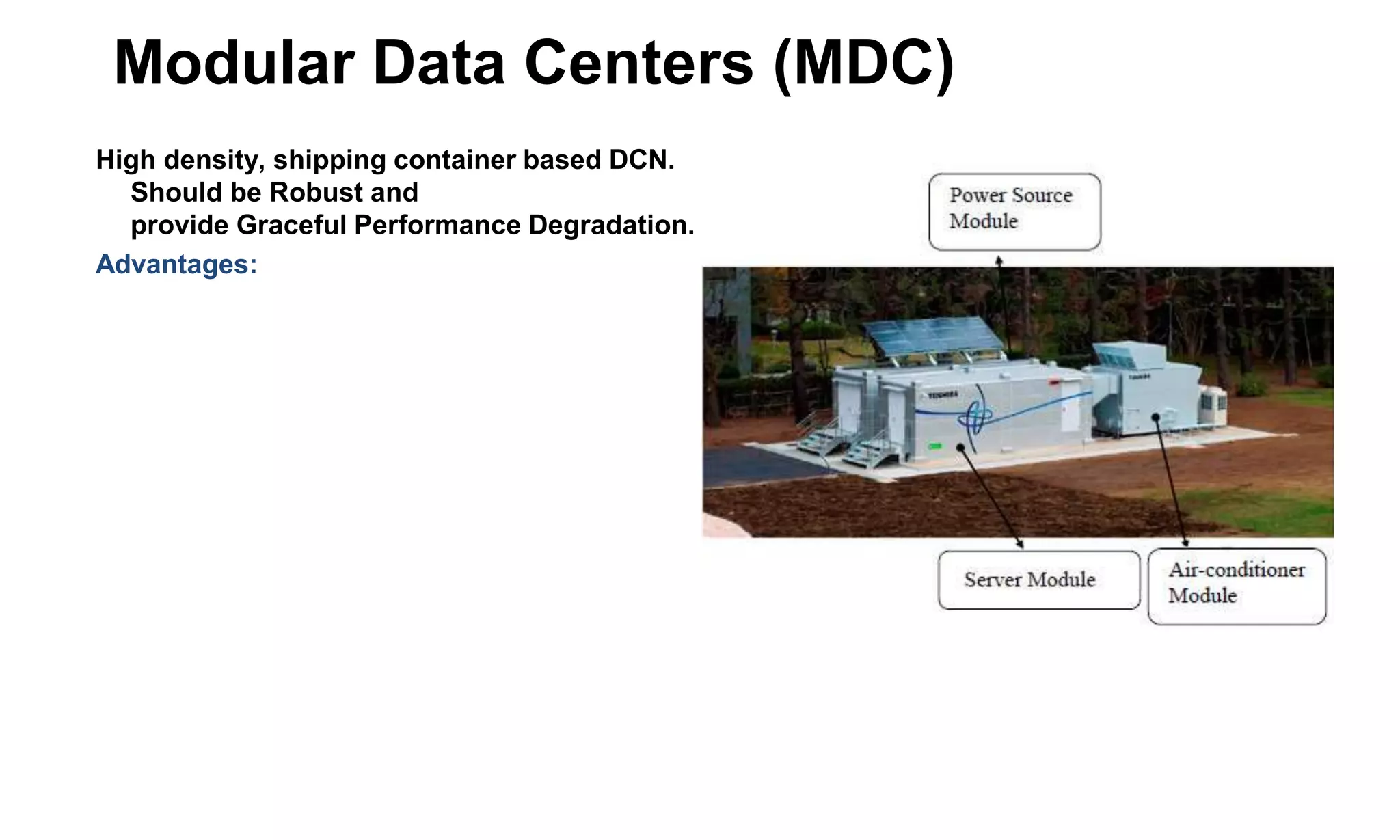
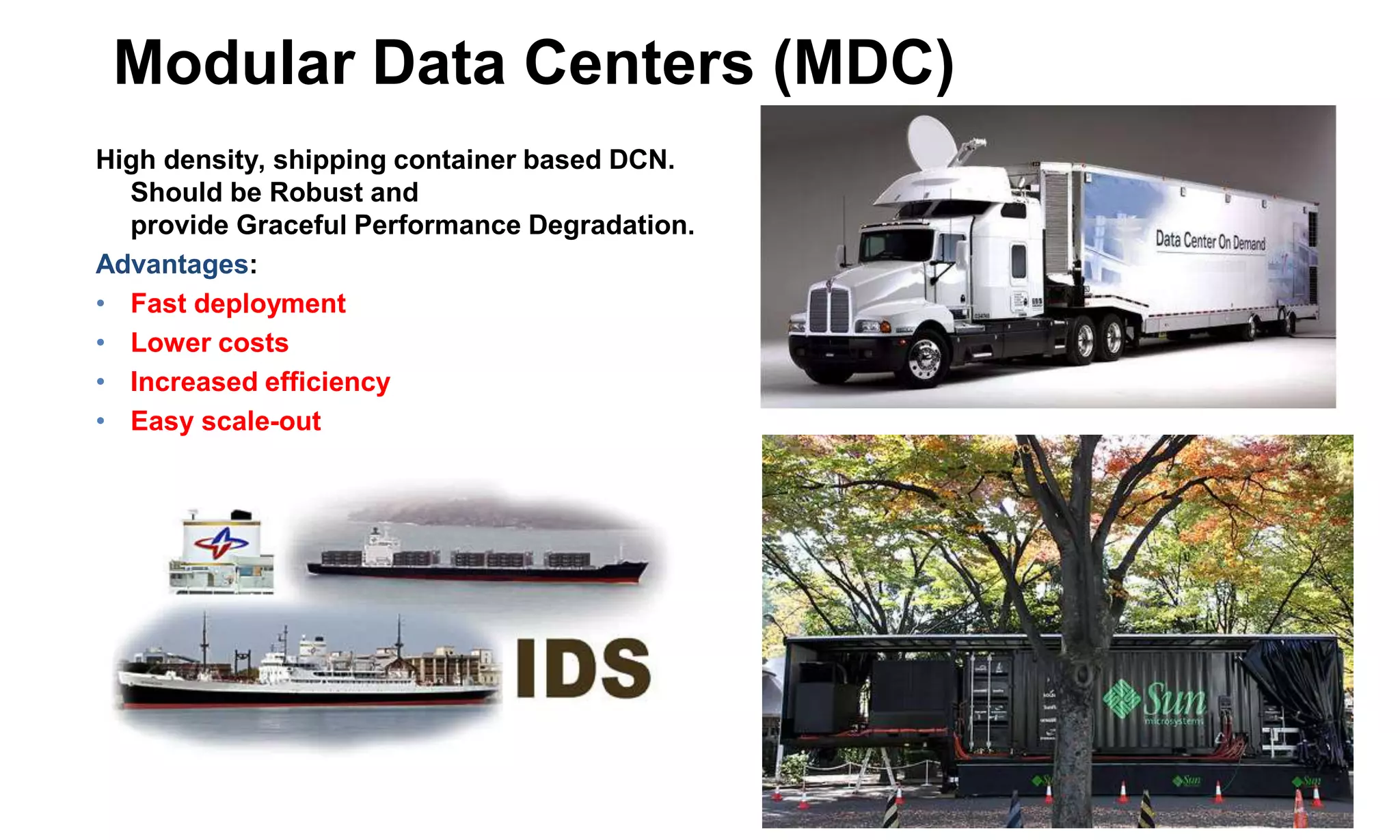
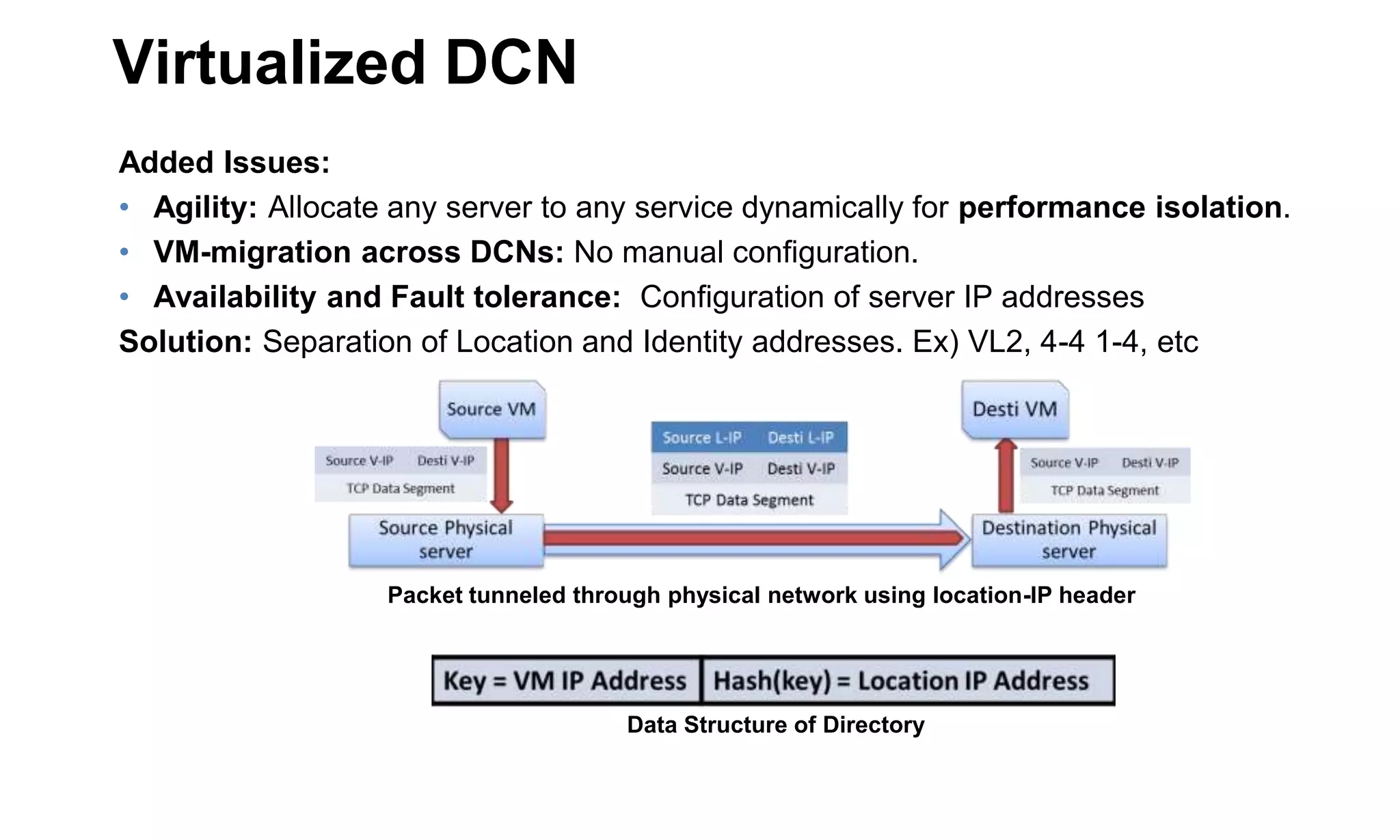
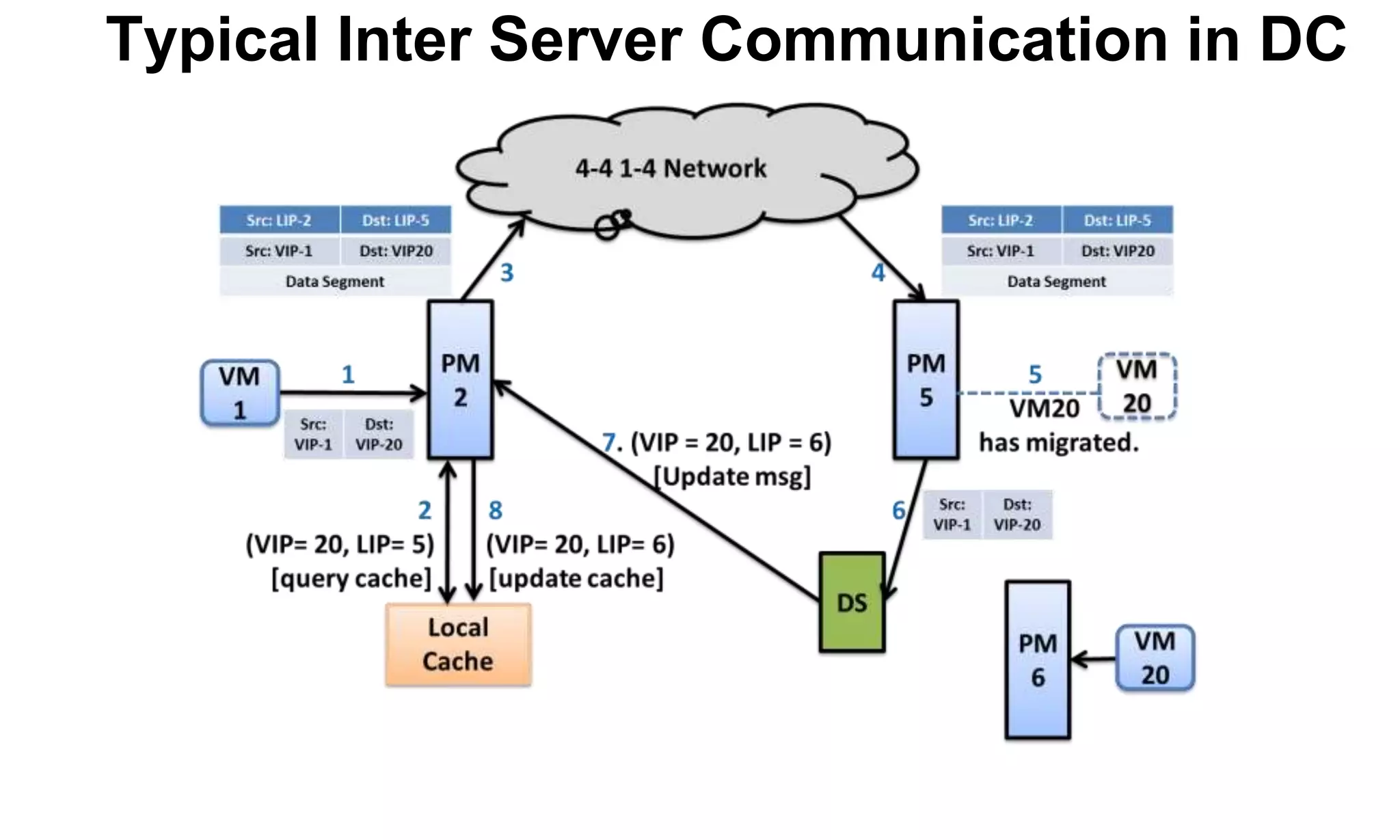
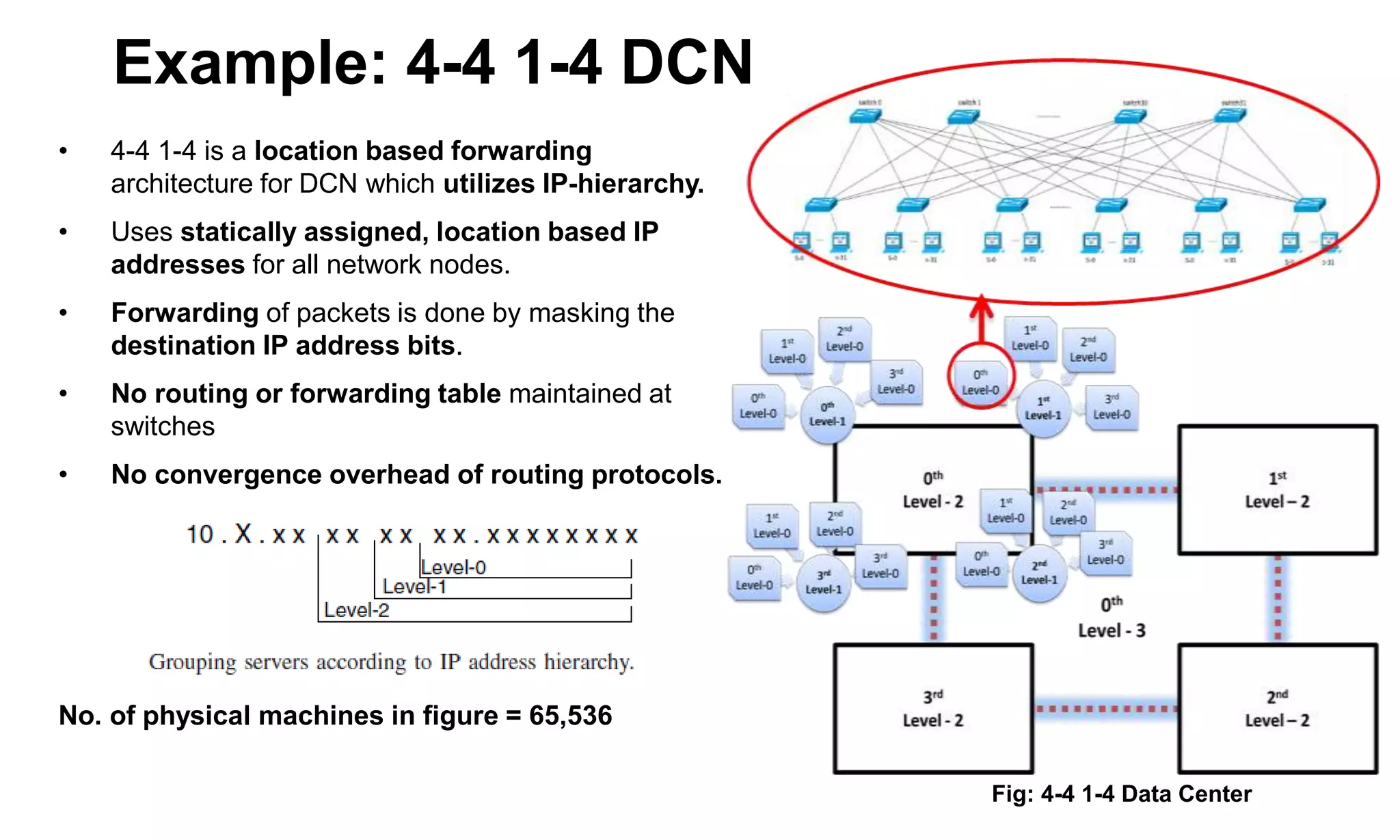
![References
• A. Kumar, S. V. Rao, and D. Goswami, “4-4, 1-4: Architecture for Data Center Network Based
on IP Address Hierarchy for Efficient Routing," in Parallel and Distributed Computing (ISPDC),
2012 11th International Symposium on, 2012, pp. 235-242.
• M. Al-Fares, A. Loukissas, and A. Vahdat, “A scalable, commodity data center network
architecture," in Proceedings of the ACM SIGCOMM 2008 conference on Data
communication, ser. SIGCOMM '08. New York, NY, USA: ACM, 2008, pp. 63-74.[Online].
Available: http://doi.acm.org/10.1145/1402958.1402967
• C. Guo, G. Lu, D. Li, H. Wu, X. Zhang, Y. Shi, C. Tian, Y. Zhang, and S. Lu, “Bcube:a high
performance, server-centric network architecture for modular data centers.“
• T. Benson, A. Anand, A. Akella, and M. Zhang, “Understanding data center trac
characteristics," SIGCOMM Comput. Commun. Rev., vol. 40, no. 1, pp. 92{99, Jan. 2010.
[Online]. Available: http://doi.acm.org/10.1145/1672308.1672325
• A. Greenberg, J. Hamilton, D. A. Maltz, and P. Patel. “The cost of a cloud: research problems
in data center networks.” SIGCOMM Comput. Commun. Rev.,39(1):68–73, 2009.](https://image.slidesharecdn.com/dcnintroduction-141010054657-conversion-gate01/75/Introduction-to-Data-Center-Network-Architecture-16-2048.jpg)